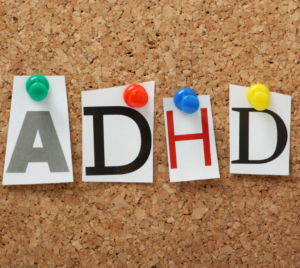ADHD (Attention-Deficit/Hyperactivity Disorder)
 Attention Deficit Hyperactivity Disorder (ADHD) affects millions of people worldwide, impacting their ability to focus, organize tasks, and regulate impulses. Medication is frequently prescribed to manage the symptoms, but therapy plays a crucial role in helping individuals develop the practical skills to regulate behavior and improve their social interaction. Understanding the benefits of therapy can make a significant difference when it comes to getting a handle on the symptoms of ADHD.
Attention Deficit Hyperactivity Disorder (ADHD) affects millions of people worldwide, impacting their ability to focus, organize tasks, and regulate impulses. Medication is frequently prescribed to manage the symptoms, but therapy plays a crucial role in helping individuals develop the practical skills to regulate behavior and improve their social interaction. Understanding the benefits of therapy can make a significant difference when it comes to getting a handle on the symptoms of ADHD.
- Definition and Onset:
- ADHD is a neurodevelopmental disorder that typically begins in childhood and often persists into adulthood.
- It affects attention, impulse control, and hyperactivity.
- Key Symptoms:
- Inattention:
- Difficulty focusing on tasks.
- Daydreaming and zoning out during conversations.
- Hyperactivity:
- Restlessness, fidgeting, and inability to sit still.
- Impulsivity:
- Interrupting conversations and difficulty waiting one’s turn.
- Impact and Treatment:
- ADHD can significantly affect daily tasks and activities.
- Treatment options include medication, therapy, and lifestyle adjustments.
Anxiety
- Emotional State:
- Anxiety is characterized by feelings of worry, nervousness, and fear.
- It’s not limited to a specific age group and can affect anyone.
- Common Symptoms:
- Constant Nervousness:
- Feeling on edge, tense, and worried.
- Physical Symptoms:
- Rapid breathing, sweating, trembling.
- Compulsive Behaviors:
- Not typically seen in ADHD.
- Impact and Treatment:
- Anxiety may interfere with daily life and focus.
- Treatment options include therapy (e.g., cognitive-behavioral therapy), relaxation techniques, and sometimes medication.
Remember that some adults may experience both conditions simultaneously, making diagnosis and management more complex.
In conclusion, ADHD can be challenging, but it’s important to understand that hope does exist. Treatment involving a combination of therapy and medication can provide a path forward to better-regulated behavior and improved social interaction.

